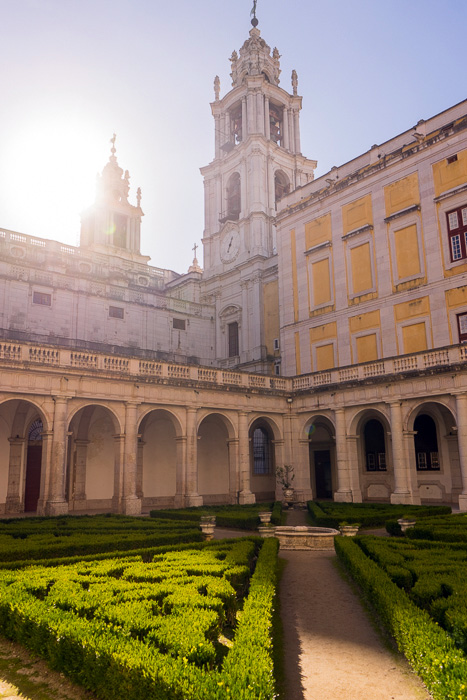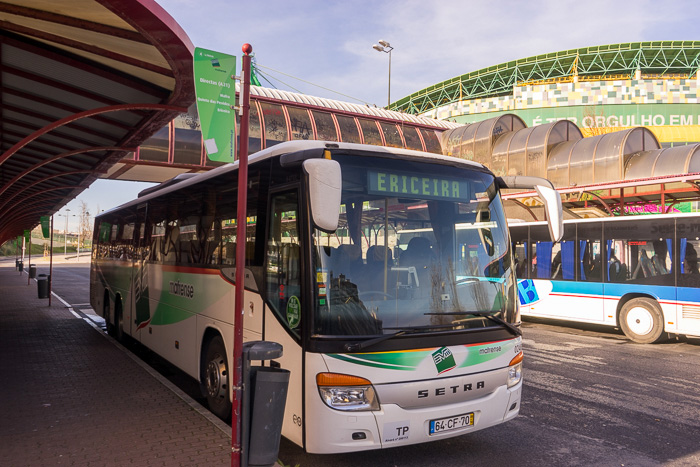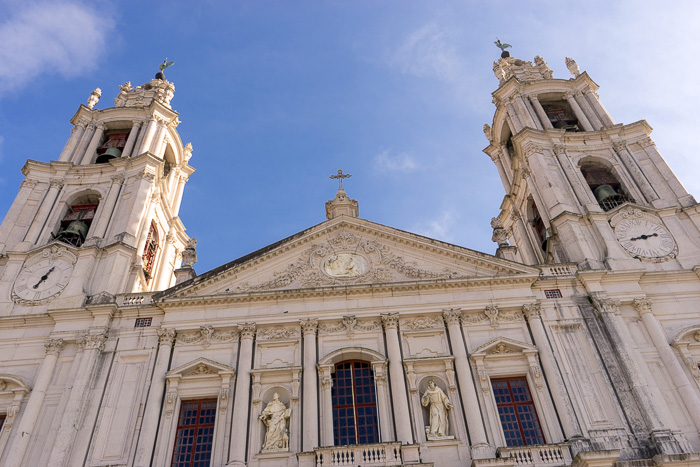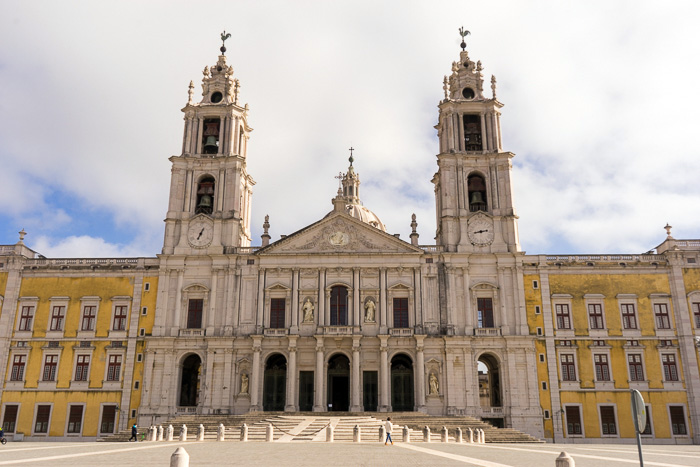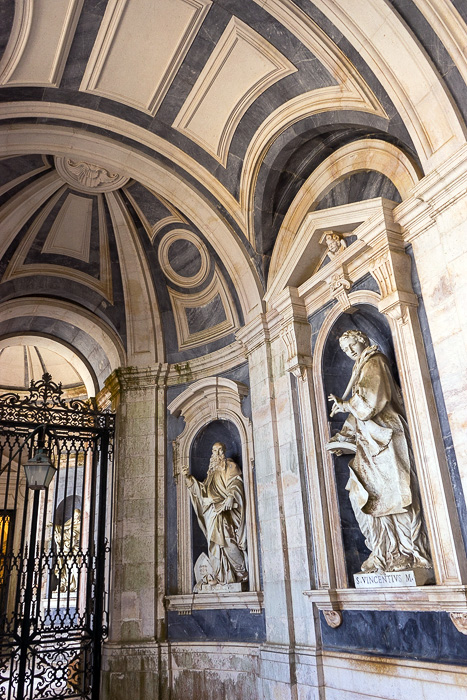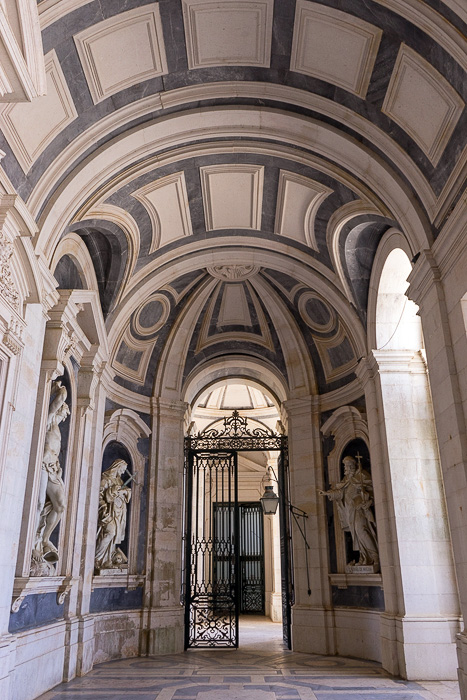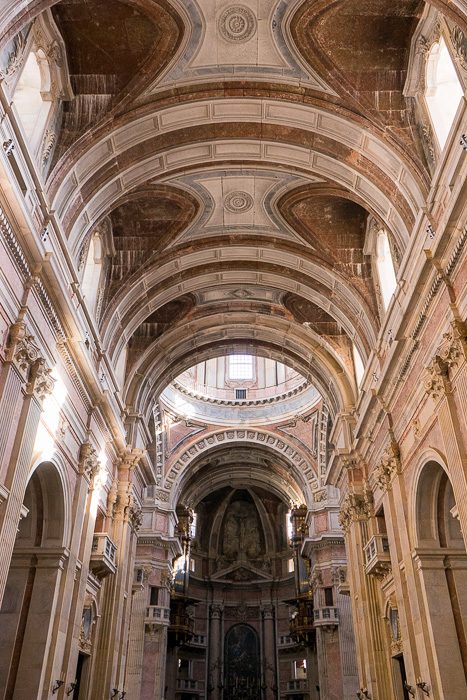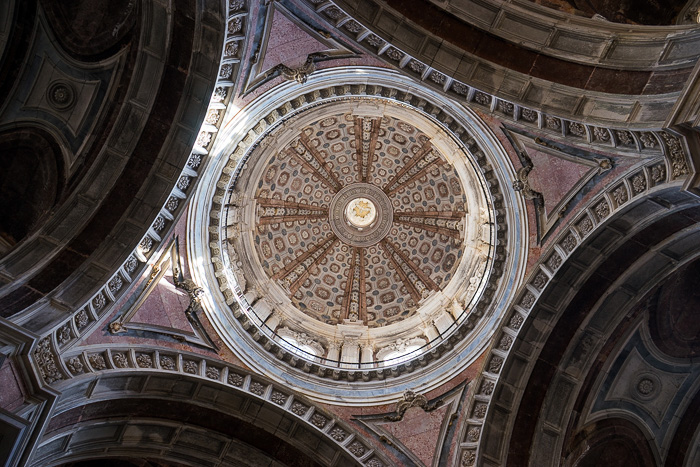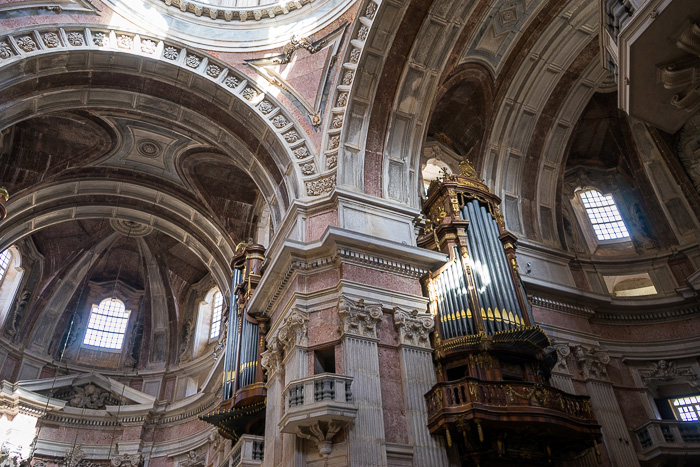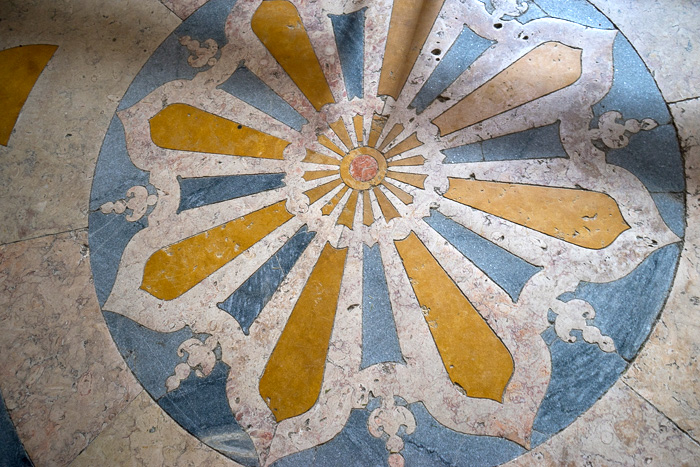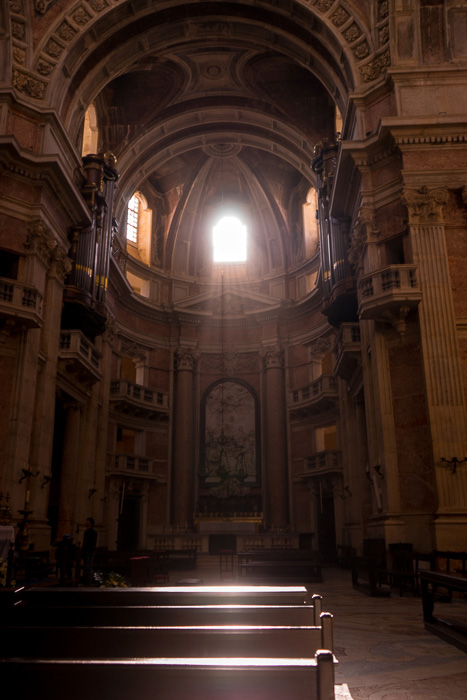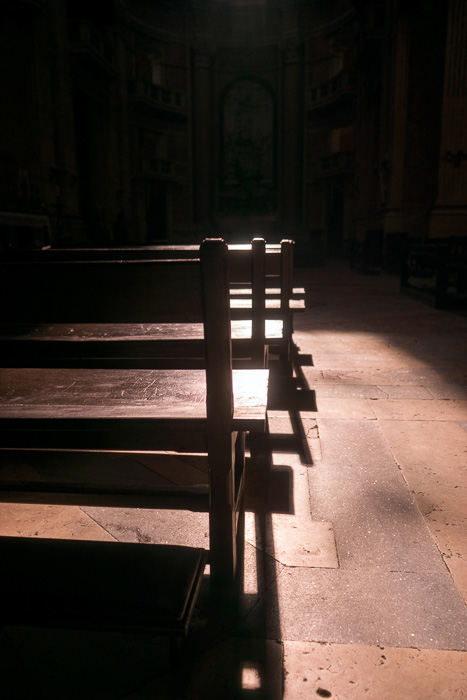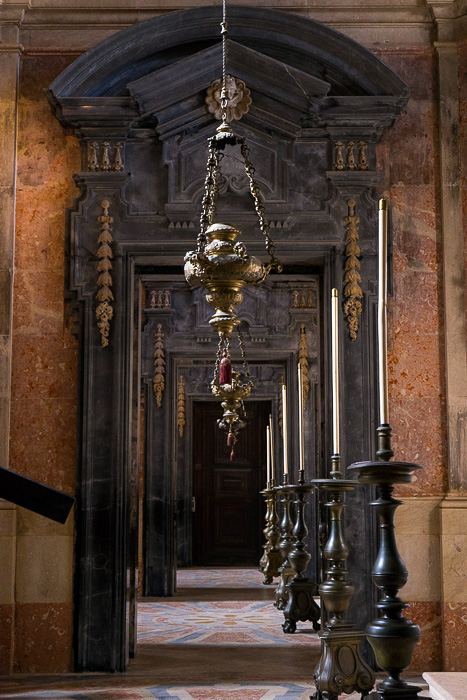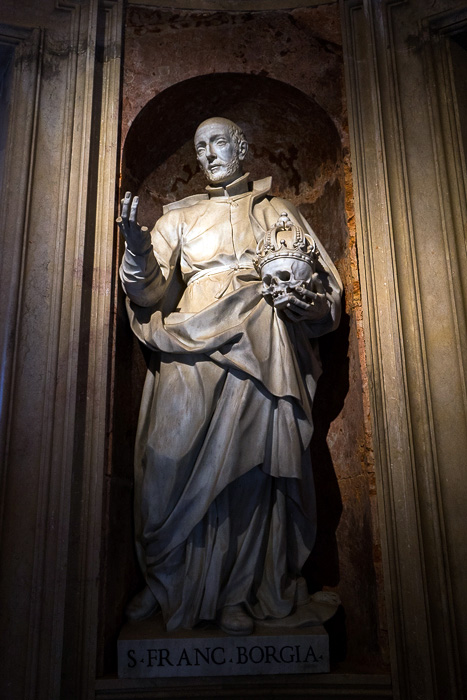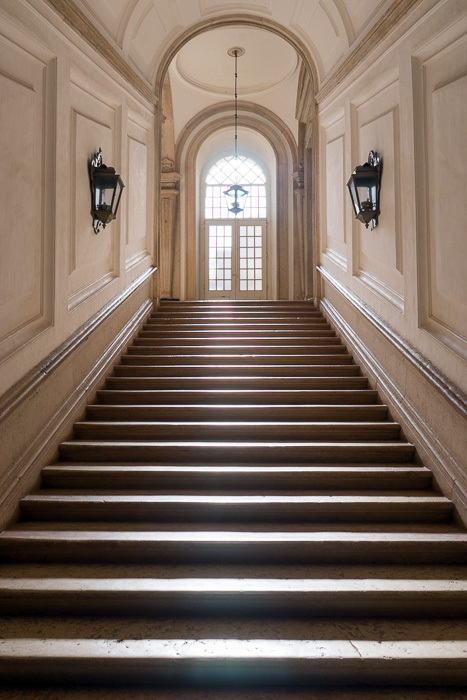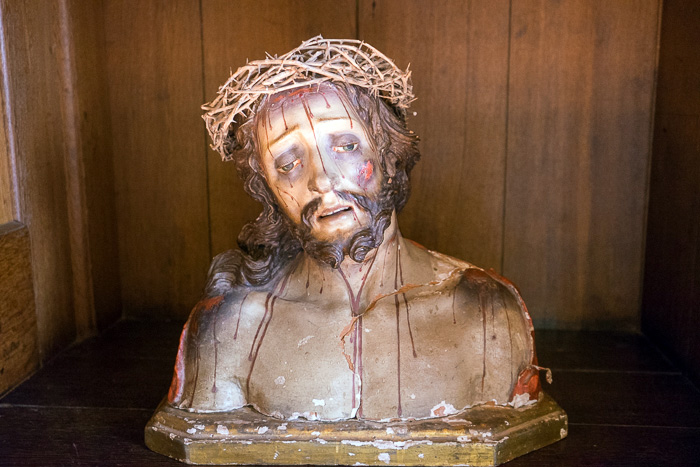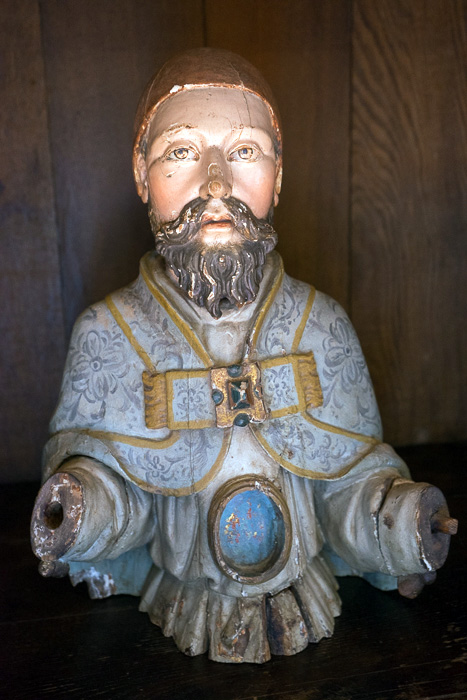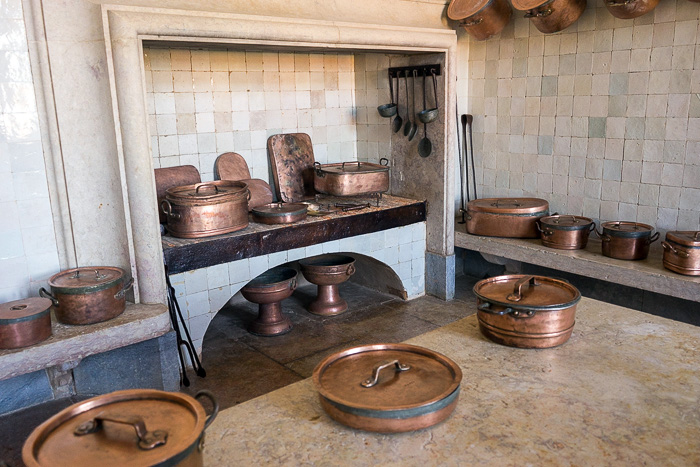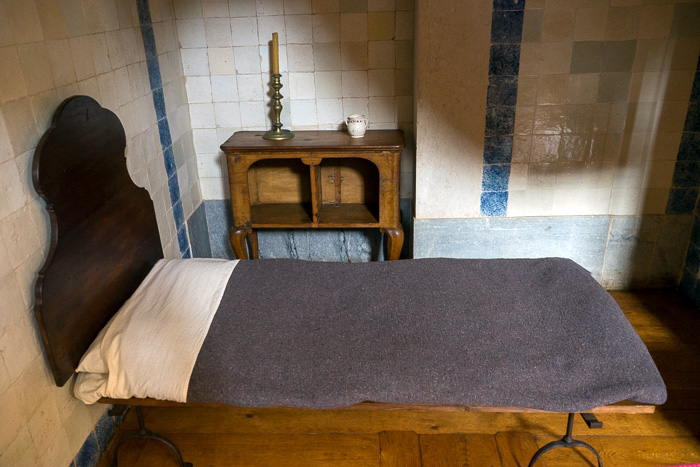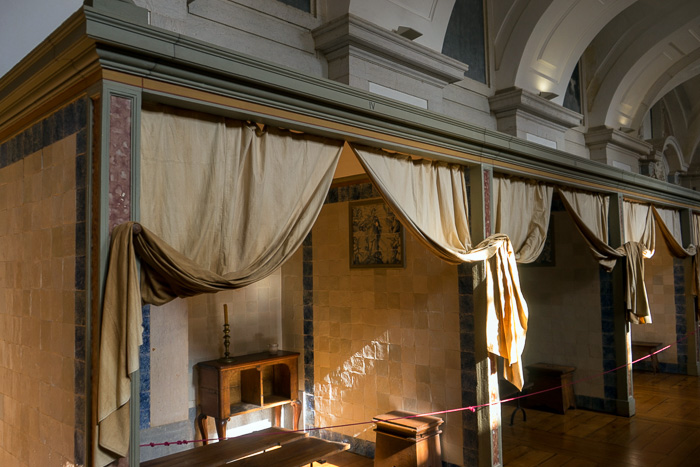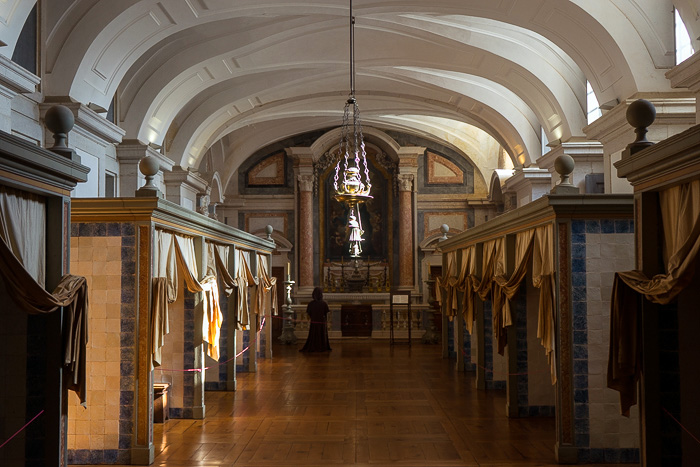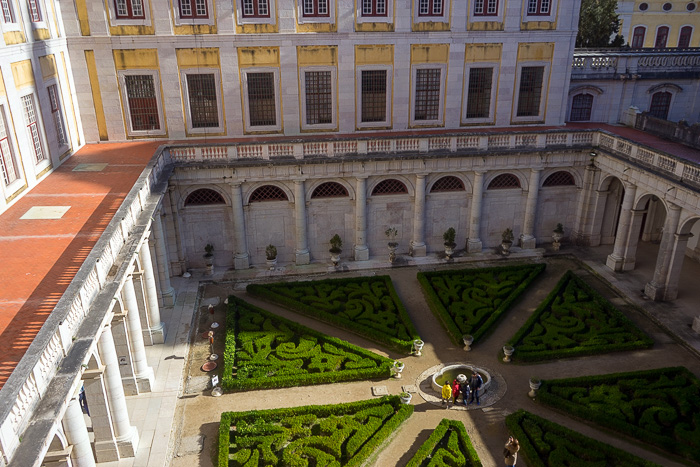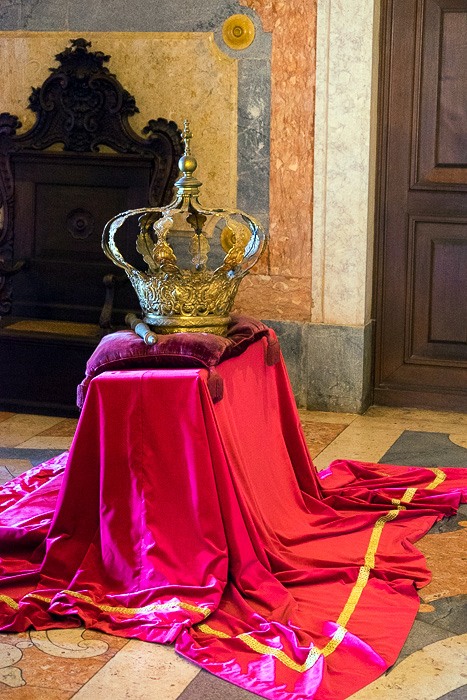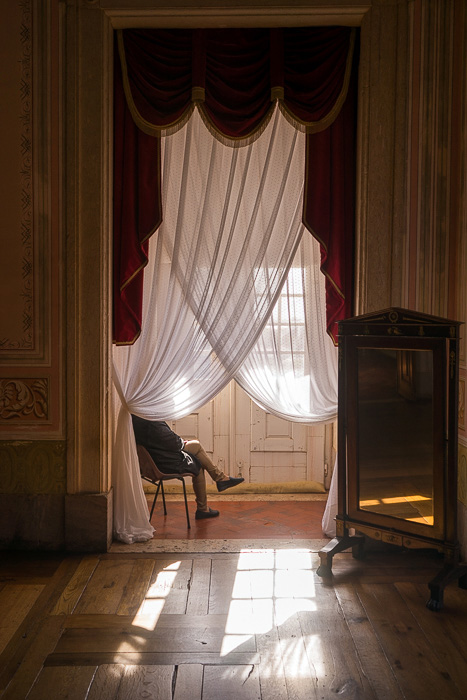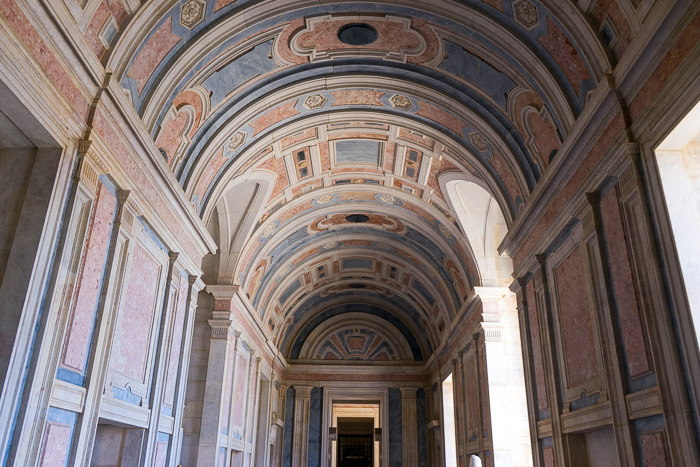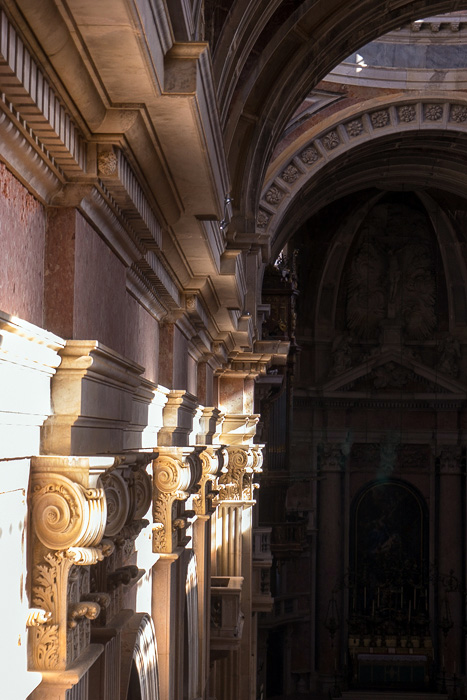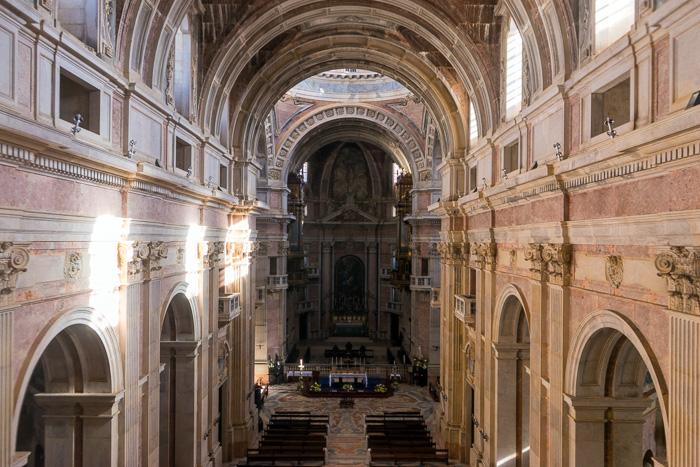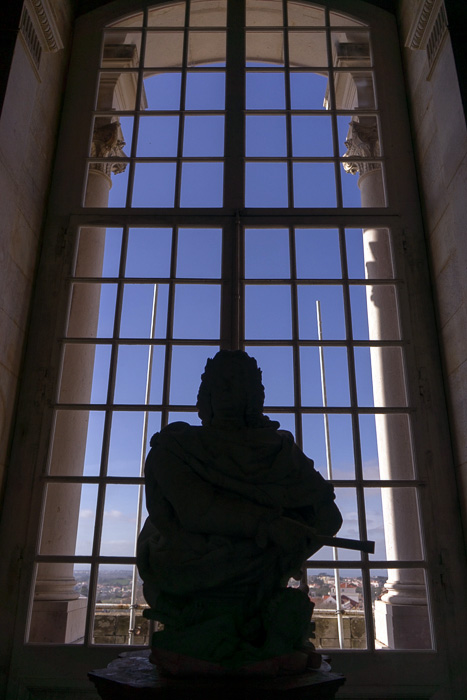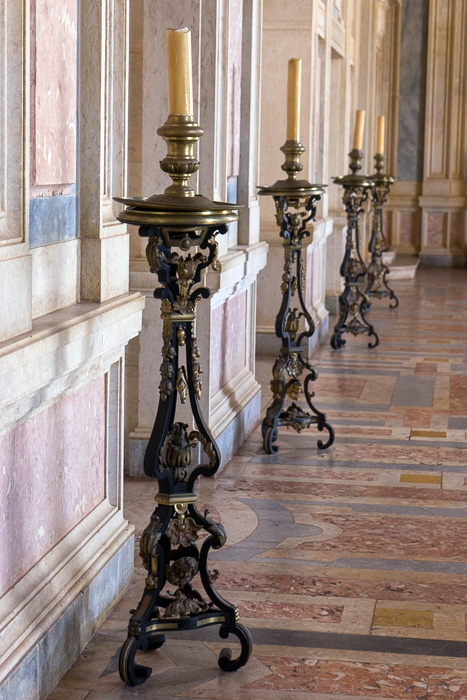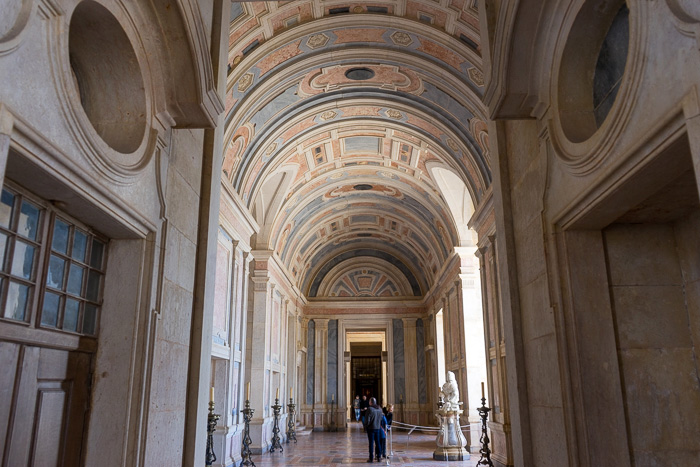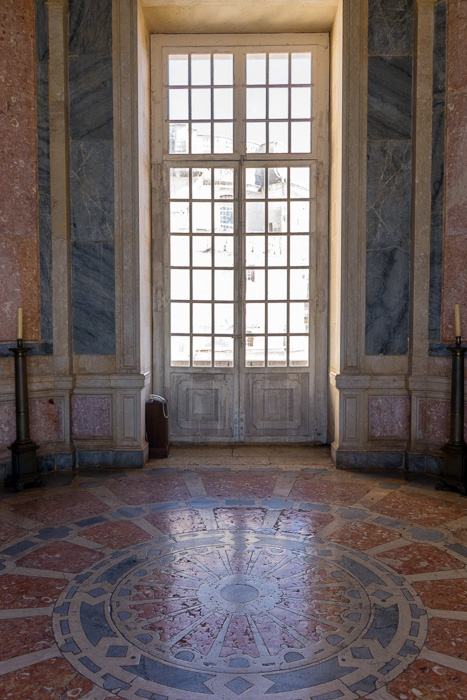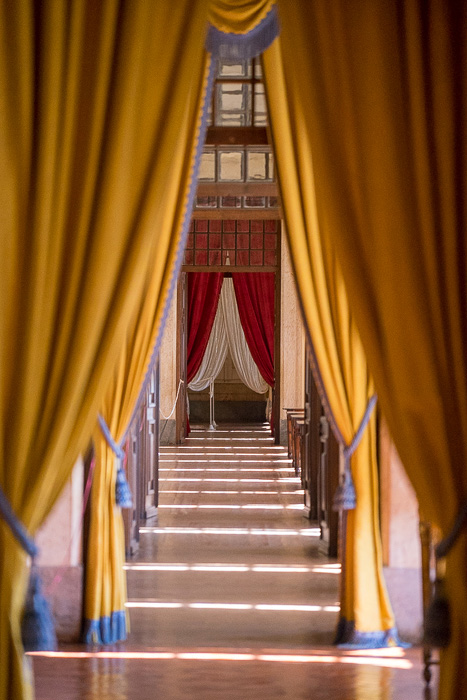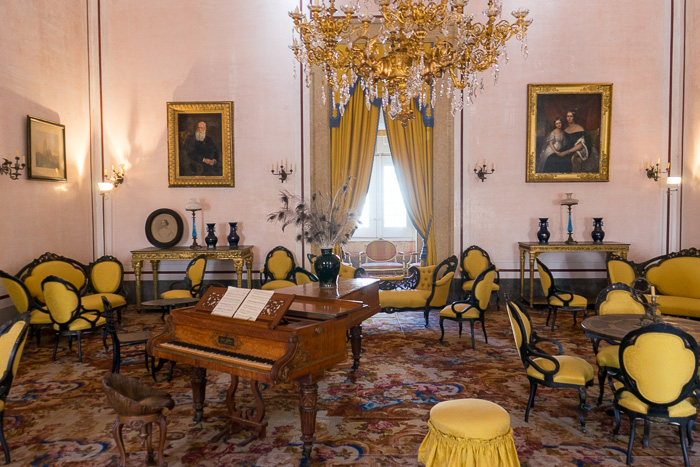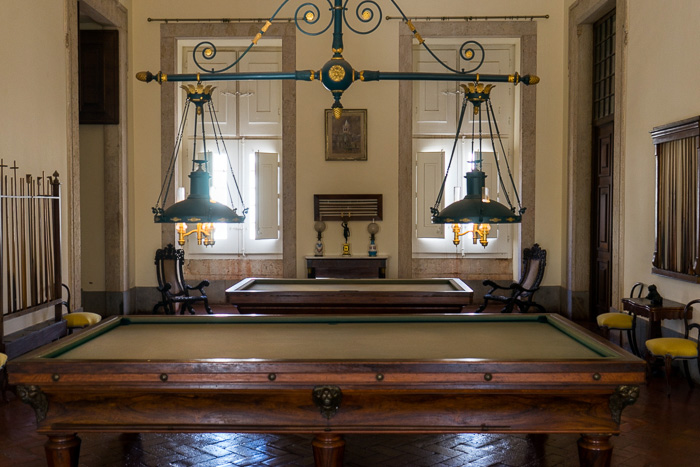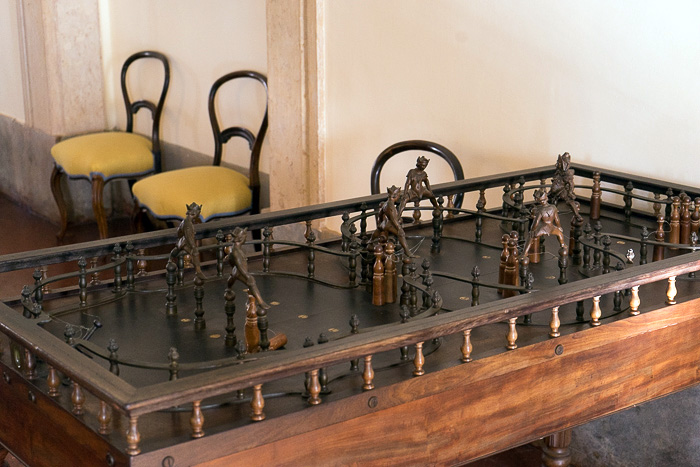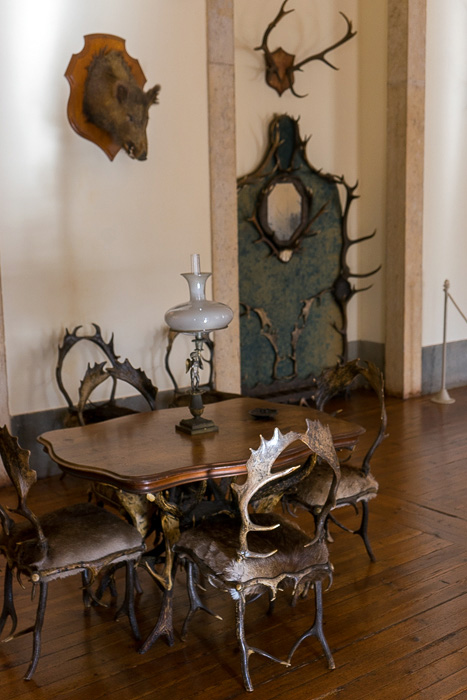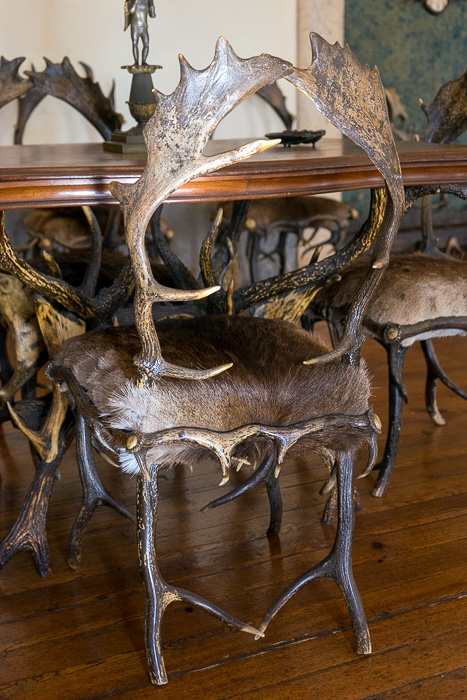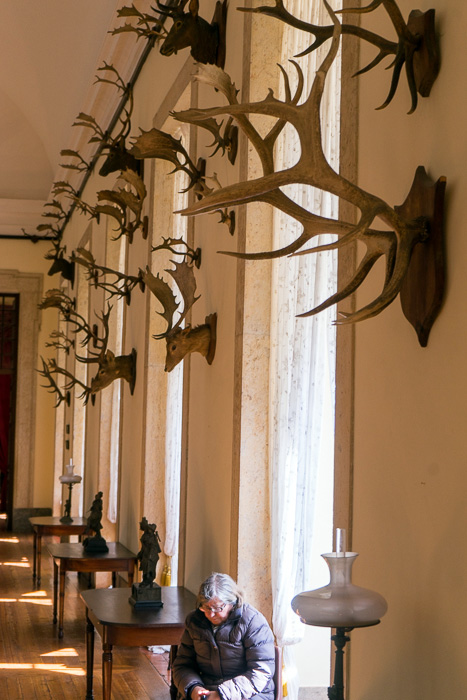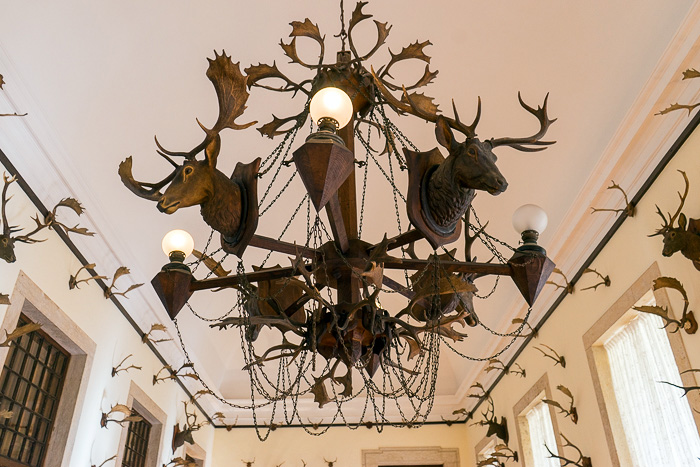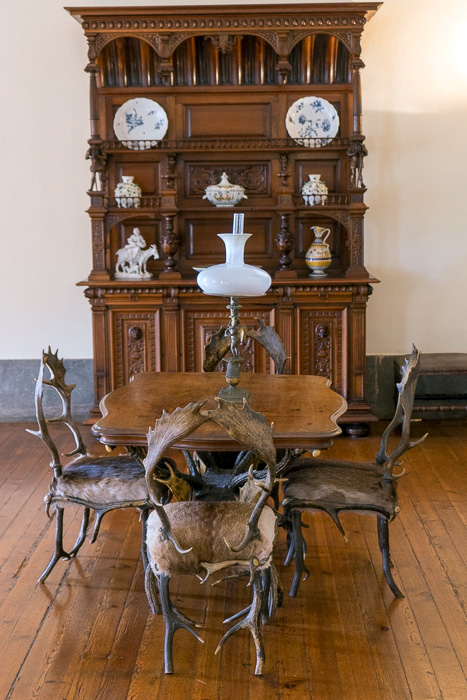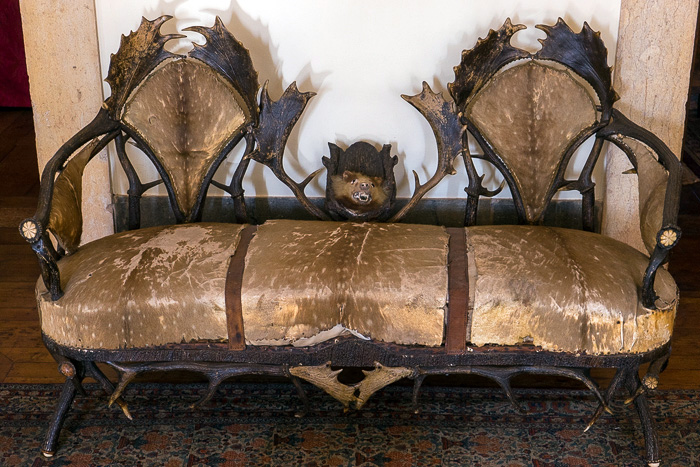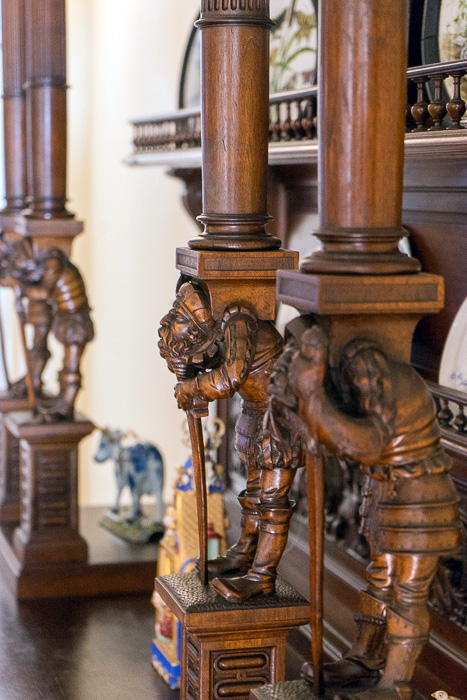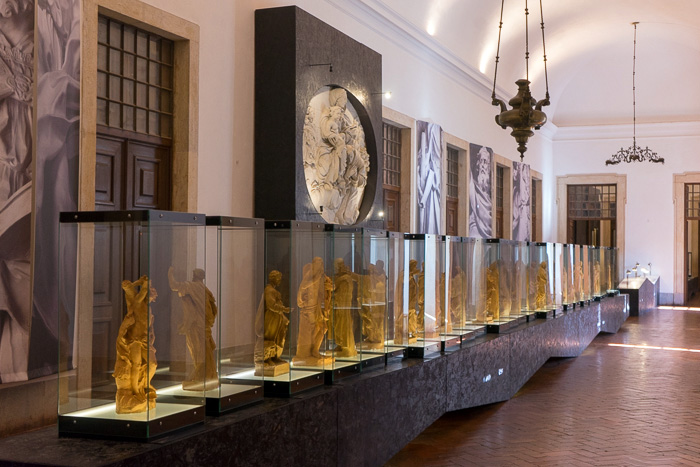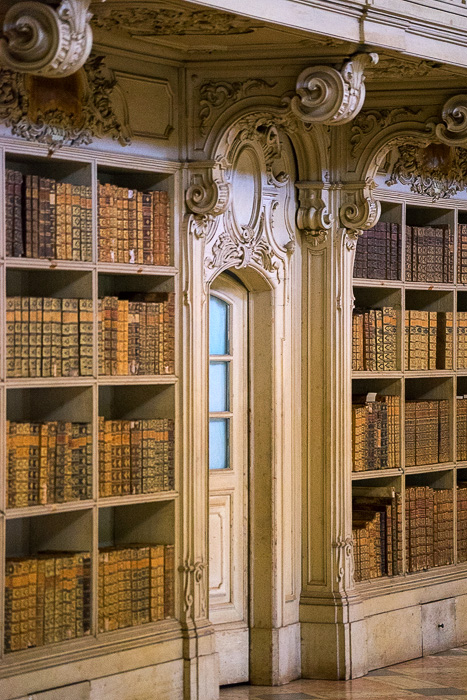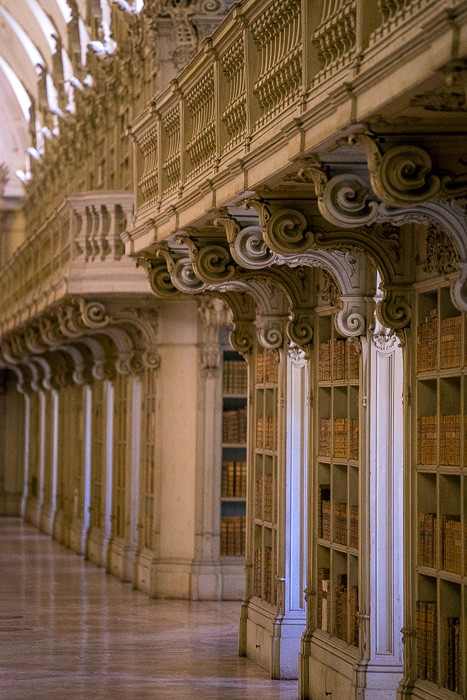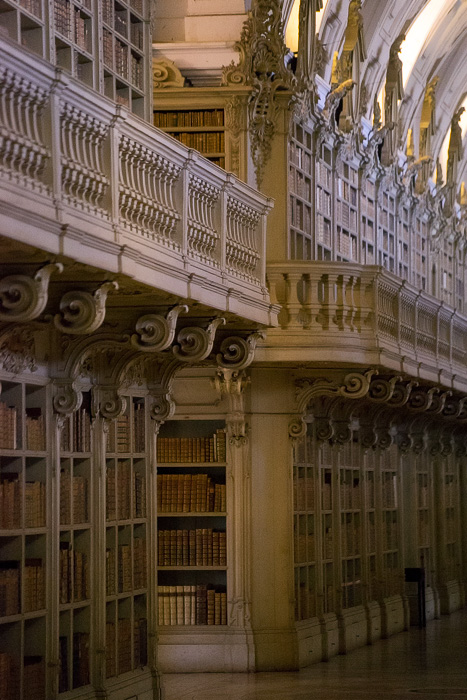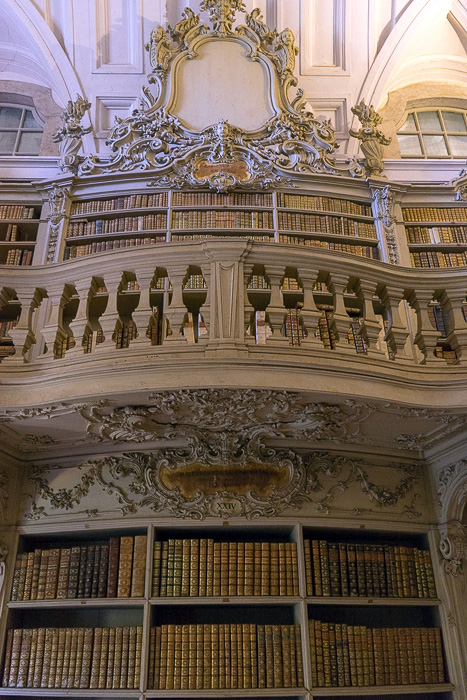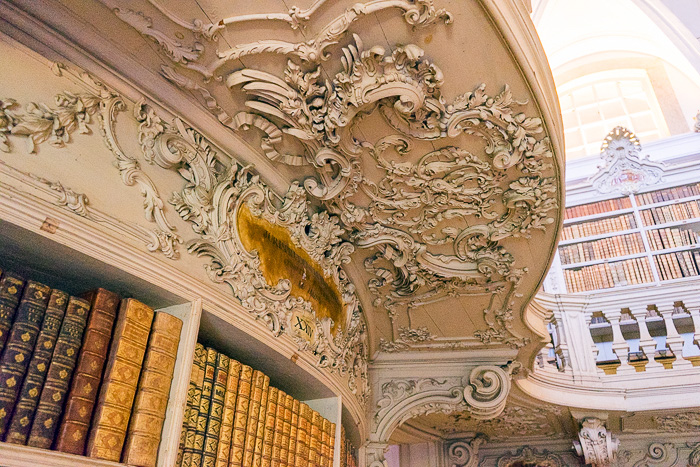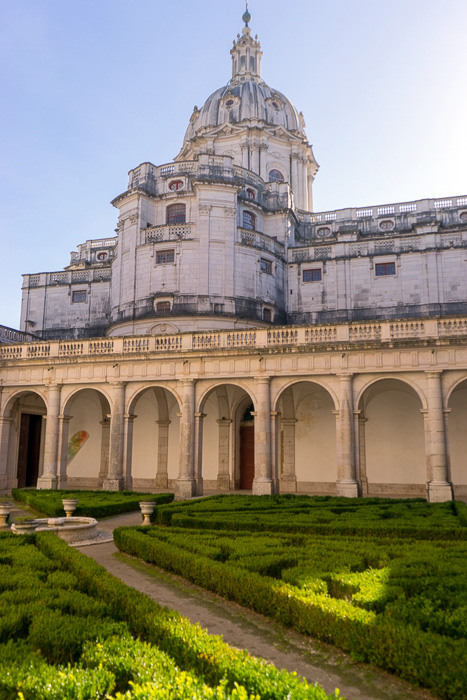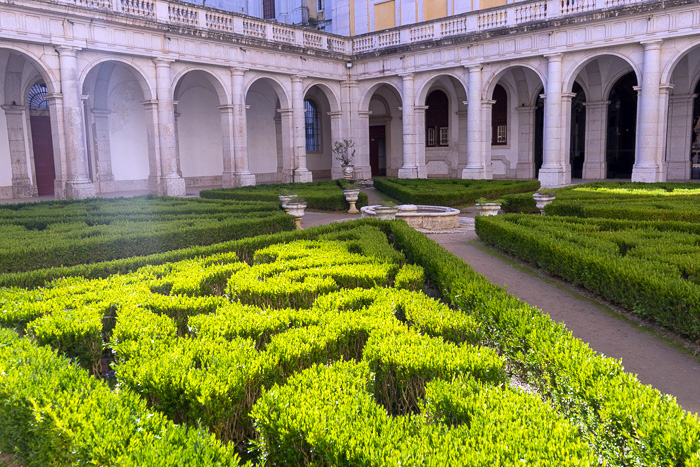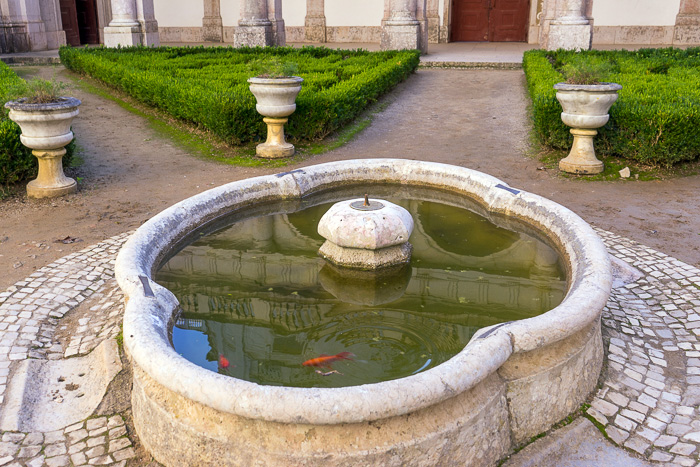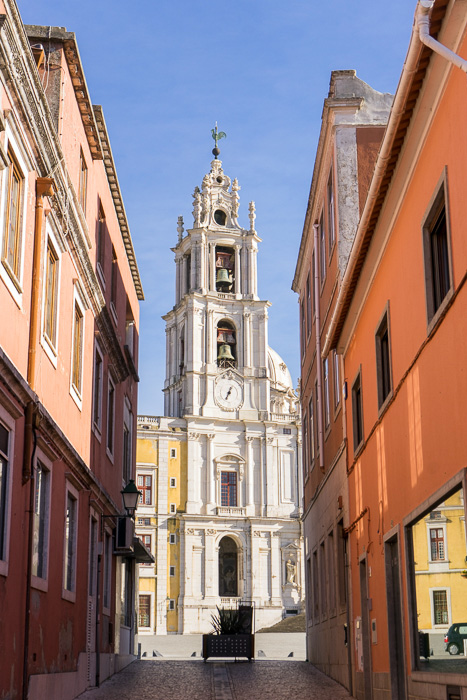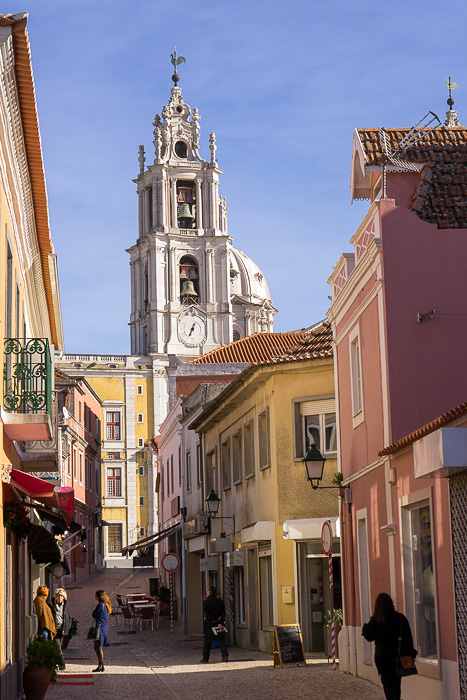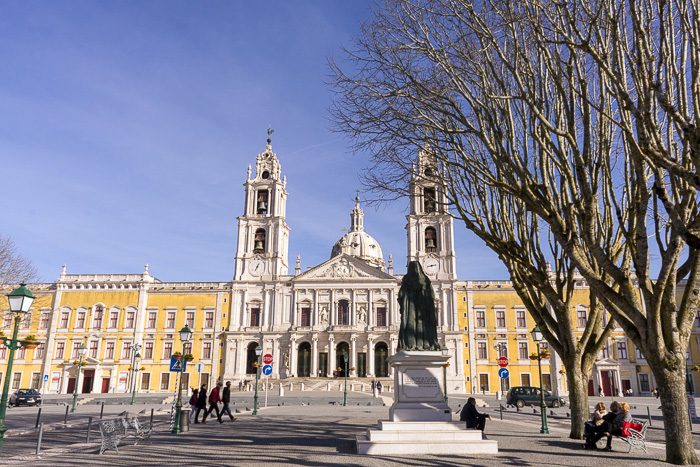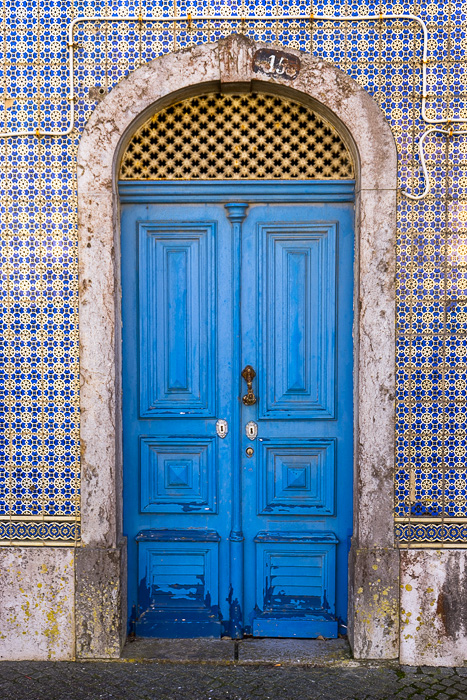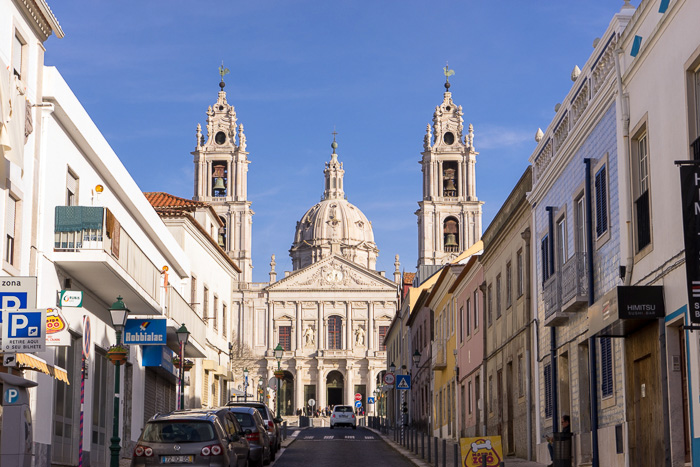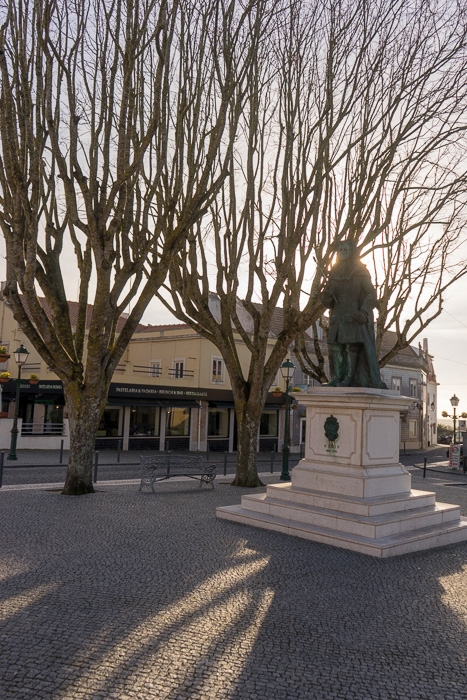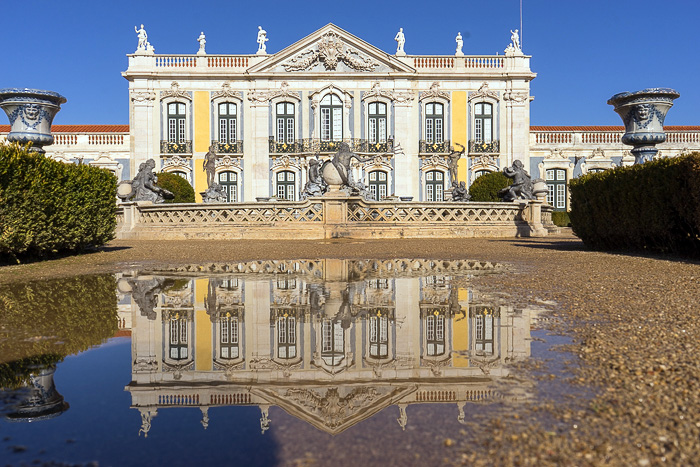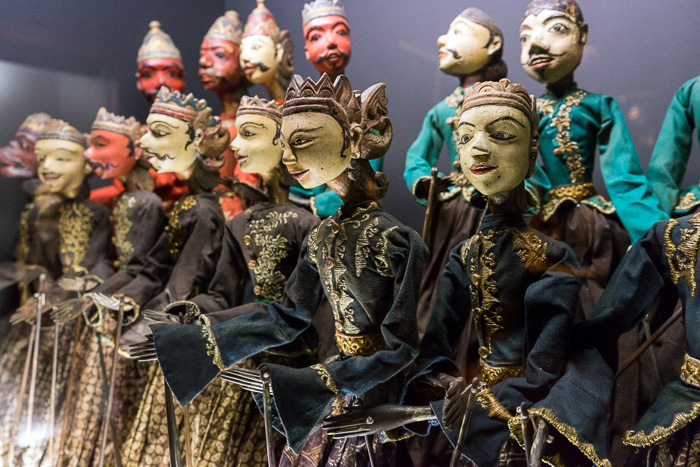A Day Trip to the Palace of Mafra
The small town of Mafra, 40 kilometers to the north of Lisbon, is home to one of Portugal’s most monumental palaces. Built between 1717 and 1750 by King João V, the Palácio Nacional de Mafra is jaw-dropping in its dimensions, and seems as large as the village of Mafra itself. We laced up our sneakers, stretched our quads, and prepared ourselves for the herculean effort of visiting the palace.
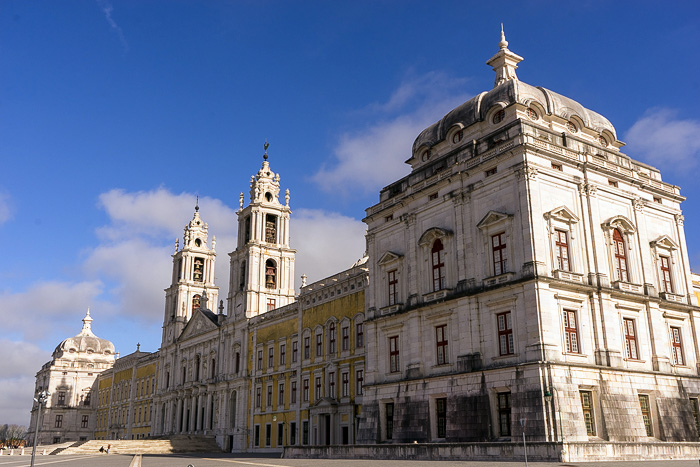
Just like the Basilica da Estrela, Mafra’s palace is the result of a promise made to God; in exchange for a child, King João V swore to erect a new palace. It’s a little questionable, promising to build yourself a fabulous new home, should the Almighty deliver the goods, but God probably didn’t care. It’s not like he had to do much. (Does God have a magic wand for such miracles? Does he wiggle his nose?)
And the King did make sure to include a glorious church in his master plan, so he wasn’t forgetting God entirely. The basilica is the centerpiece of the palace, set directly in the middle of the symmetrical layout. Its most striking feature is a set of six massive organs. Unique in the world, they’ve inspired musical arrangements which can only be played here.
We didn’t spend too much time in the basilica before moving on into the palace. With 1200 rooms, and covering a space of over 37,000 square meters, this place is beyond intimidating. It’s the work of German architect Johann Friedrich Ludwig, who died halfway through its construction; his son António would finish the task. Until the end of the Portuguese monarchy in 1910, the country’s royalty used the palace on-and-off. Nobody actually lived here full-time, but they used it as a base for hunting excursions in the woods around Mafra.
That fact surprised us at first. Who builds a palace of this size, and then doesn’t actually live in it? But once we started walking around, we understood. The palace might be impressive, but it’s not exactly cozy. The words we kept coming back to were “cold” and “repetitive”. The layout follows a very rational plan, one room leading to the next, in the same pattern in either wing, and although it makes for a wonderfully straightforward tour, it must have been a tiring place in which to live.
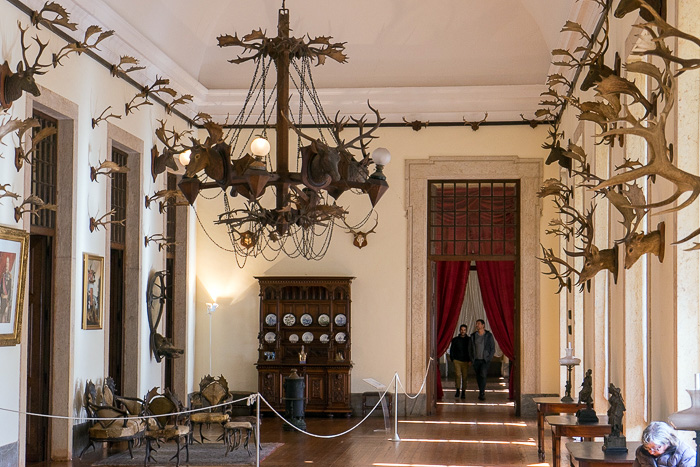
The second-best room in the palace is the Sala dos Troféus, or Trophy Room, where dozens of heads are mounted on the walls, and all the furniture is made from antlers and hides. It’s awesome on a lot levels, and so absurd that it almost seems ironic. Like, maybe one of the princes was some sarcastic sophisticate who decided to mock his hunting-crazy uncle by designing the most ridiculously macho room ever. “Welcome to my chamber of virility, Uncle,” the prince, splayed across the pigskin chaise, would slur with a theatrical flourish. “Do make yourself at home.”
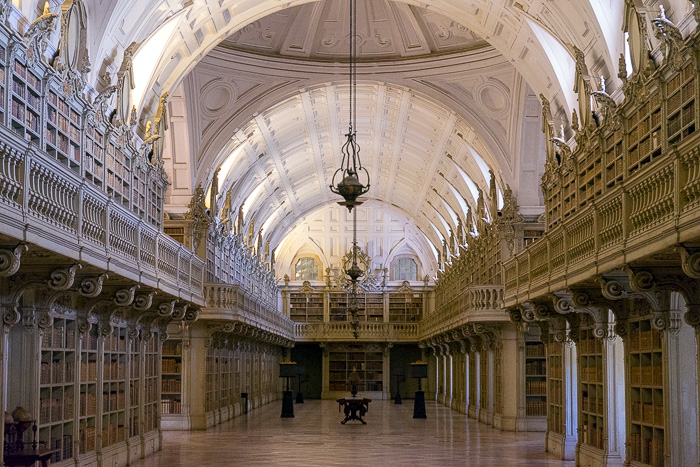
The Trophy Room is great, but the best section of the palace — and I doubt anyone would disagree with this — is the Rococo library. I literally stopped in my tracks upon entering this hall and uttered, “woah.” And then Jürgen came in after me, and added his own “woah”. This library contains 36,000 ancient tomes, including some extremely rare volumes. It’s absolutely gorgeous, and the fact that we weren’t allowed to browse around at will was both totally understandable and entirely frustrating.
It was easy to reach the palace from Lisbon. The bus company Mafrense runs frequently from Campo Grande station to Mafra, including a stop directly in front of the palace; some of the buses are express, which bring the journey down to about 30 minutes. Check their website for the schedule.
